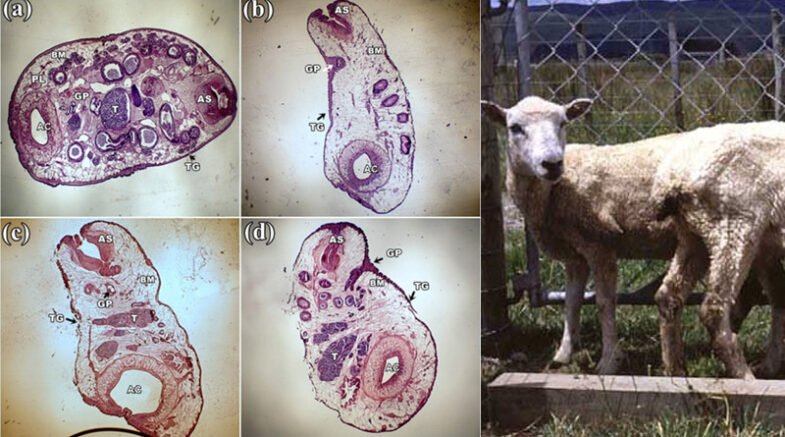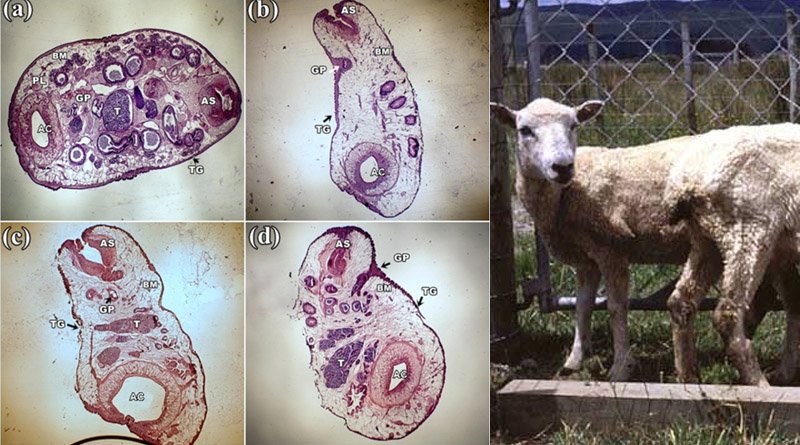Helminthiasis is a term used to describe a collection of macro parasitic diseases that helminth parasites cause in humans and animals in a variety of nations.

Amphitomiasis (or Paramphistomiasis) is a helminthic disease caused by this parasite, and infects the rumen of various animals however adult paramphistomes are the major cause to spread the disease among sheep, goats, cattle, and water buffaloes.
Parasitic infections are a global issue and a severe exertion to animal health and performance. A variety of parasitic infections are responsible for causing different diseases in livestock populations as a result of various management as well as climate change factors like poor care, an unsanitary environment, harsh weather, and close contact with the diseased animals.
Paramphistomes infections have long been a deserted digenean trematode and the most recurrent parasites in ruminants and now recently this parasite becomes important for causing serious productive losses and financial losses as well.
Helminthiasis is a term used to describe a collection of macro parasitic diseases that helminth parasites cause in humans and animals in a variety of nations.
Paramphistomes are found throughout the world, although they’re more common in warmer areas such as Australasia, Africa, and India, where they primarily afflict cattle, goats, and sheep. Paramphistomum hibemiae, P. cervi, P. ichikawai, P. gotoi, P. scotiae, P. liorchis, P. microbiothriodes and P. microbothridium, are the most commonly associated with infections in sheep.
Economic losses caused by Paramphistomes infection have not been estimated, but may be greater than those caused by many other parasites. It is important to have a thorough understanding of what’s out there so that preventative actions may be done in the case of an outbreak.
The animals are not seriously harmed by light infection, but heavy infection of juvenile paramphistomes can cause serious damages.
Pathological conditions caused by mature paramphistomes are ruminitis, irregular rumination, loss of body condition, decreased milk output, and reduced fertility and in young animals mostly acute gastroenteritis, higher morbidity and fatality rates are common due to burden of this parasite.
Though paramphistomiasis is primarily a ruminant illness, human cases are also reported. Three species from two families have been documented to have medical significance, although Gastrodiscoides hominis is the most relevant in terms of public health.
The life cycle of Paramphistomum involves multiple stages, including the presence of intermediate hosts such as snails, which can contribute to the spread of infection.
Animals become infected by ingesting infected vegetation or water sources, which contain the infective larvae. Once ingested, the larvae migrate to the animal’s digestive system and attach to the lining of the stomach, where they feed on blood and tissue.
Paramphistomum infections can cause a range of health problems in livestock, including weight loss, reduced milk production, anemia, and in severe cases, death.
Effective management of Paramphistomum infections in livestock involves several measures, including proper sanitation, regular deworming, and the use of anthelmintic drugs to control the parasite population.
To overcome a disease epidemiological studies can play a crucial role in terms of identification and possible strategies against the causative agents.
Therefore, rapid advances in technology for identification of various parasites, particularly the polymerase chain reaction (PCR), may provide useful supplemental tools for identifying digenean infection and overcoming the limits of present morphological-diagnostic procedures.
Due to their high nucleotide substitution rates, parasitic flatworm mitochondrial (mt) genomes have become particularly valuable markers for detecting their existence in animals and investigating their evolutionary relationships at various levels.
Previous published research on paramphistomiasis disease mainly addressed epidemiology, morphological characters and life history of Paramphistomes prevalent in livestock, but due to their close resemblance within species it is more difficult to recognize a particular species with conventional identification. Therefore, molecular biology techniques can be useful for species identification and categorization.
Molecular approaches have been used to characterize the Paramphistome genus and species. Because immature worms are the disease-causing agents, identifying these worms is not an easy task, so the researcher may be forced to rely on the dubious process of recognition.
Furthermore, by combining location and host data, a database that may be used to assess Paramphistome host–parasite associations and biogeography can be created. Such work will also result in more accurate methods for identifying paramphistome in livestock, as well as a better knowledge of their evolutionary links.
Suggestions to overcome on Paramphistomiasis:
- For appropriate knowledge about prevalence status of this disease among various ruminants there is a need to do more studies from coastal areas and water-logged areas with marshy places of Pakistan due to favorable climatic conditions for survival of this parasite.
- Snails are the vectors of these parasites; therefore, it is very important to control the vector population of this parasite around the livestock forms.
- For accurate information about prevalent species of this parasite a molecular investigation along with traditional or conventional techniques should be carried out with keeping a view of seasonal impact on paramphistomiasis.
- All animals present in a livestock farm should be treated equally in terms of food supplements and management practices.
- Drenching of various antihelminthic agents are the main source to overcome Paramphistomiasis in field practices. Therefore, to control the Paramphistomiasis drenching must be done throughout the year repeatedly after two or three months.
- An extension education program is required to educate the livestock owners and farmers to improve their knowledge about management practices of Paramphistomiasis disease.
Purpose of this article:
The main purpose of this article is to highlight a neglected endo-parasitic disease paramphistomiasis which is caused by rumen fluke or Paramphistomum. Paramphistomum is a genus of parasitic flatworms that infect the digestive system of livestock such as cattle, sheep, and goats.
Paramphistomum infections in livestock are prevalent in many regions of Pakistan, particularly in rural areas where animal husbandry is a common livelihood.
Due to lack of awareness about this parasite livestock owners are unable to protect their animals against this diseases. Livestock owners and animal health professionals in Pakistan should be aware of the risk of Paramphistomum infections in their animals and take appropriate measures to prevent and control the spread of the parasite.
This can include ensuring that animals have access to clean water sources, avoiding grazing in areas where snails are prevalent, and implementing regular deworming programs.
This article is jointly authored by Mahvish Rajput, Muhammad Sohail Sajid and Urfa Bin Tahir.
